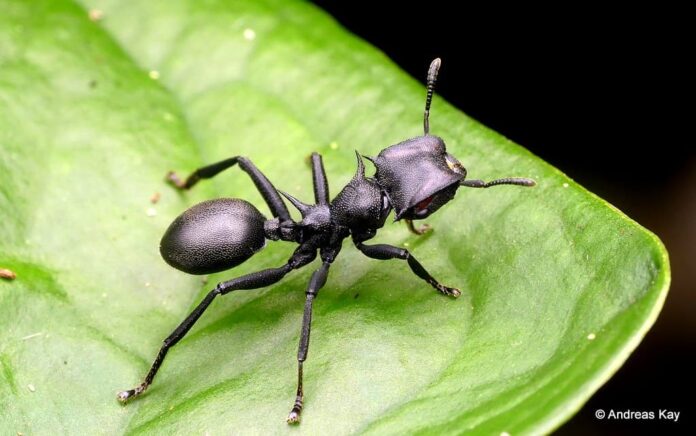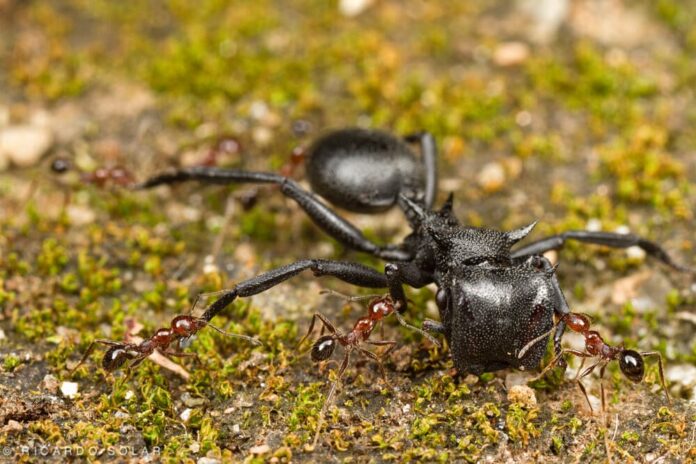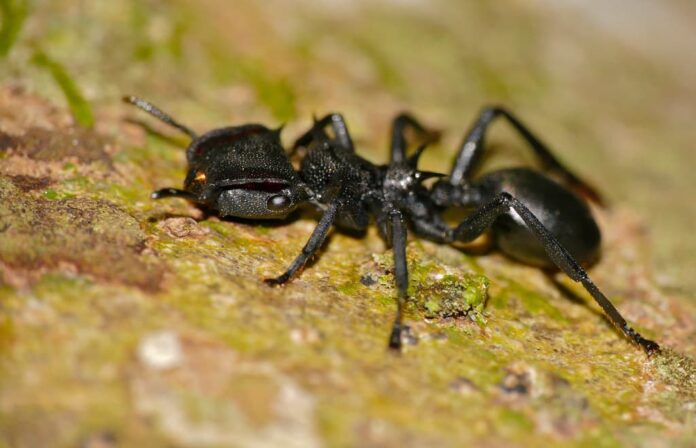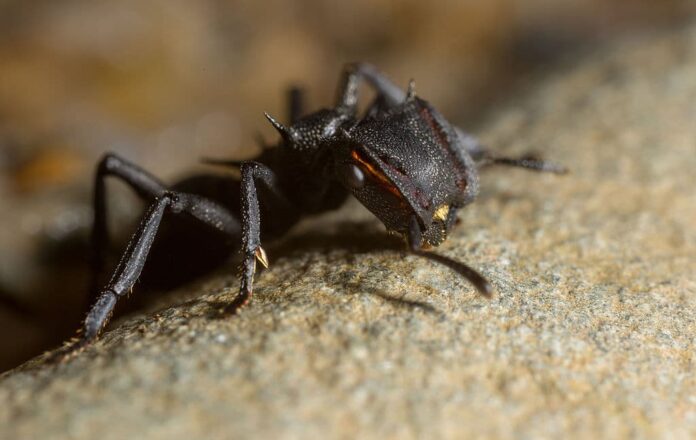Cephalotes atratus aka giant turtle ants exhibit this intimidating look with a large size for ants. I accidentally came across the image of this ant species while reading about ants, and my curiosity was flooding my head. So here I am with some fascinating facts and information about cephalotes atratus from my research. I hope you find this large ant species interesting as I do, their guise is out of this world.
1Appearance

One of the most distinctive characteristics of cephalotes atratus is the peculiar shape of their heads. This ant species has a large flattened hexagon-square-shaped head with two pointy and sharp antennae on top. A male ant is smaller than the female, and he has a black head and thorax with dark reddish-brown gasters and limbs.
The worker ants are large, mainly black in color with very strong legs for climbing trees. At the same time, they have a spiny body while the heavily armored mandibles are powerful enough to chew through wood. The combination of the armor on the body and dark color makes these ants look so robust and menacing.
2Behavior

Cephalotes atratus also go by another nickname “gliding ants”, though wingless, due to their evolving ability to “parachute”. If they lose their footing, giant turtle ants can steer their fall so that they can go back. Should a gliding ant fall off a tree, it is imperative that it is able to return to its original position. It is very unlikely for them to be able to relocate the trail that leads back to the nest if they hit the forest floor. So any ant that falls off its perch and can’t make it back to the nest will die. In fact, the mortality of ants that fall to the forest floor varies depending on the environment they live in.
3Feeding & Habitat

Cephalotes atratus is omnivorous, so these ants feed on anything they can find. However, one of their most favorite meal is the honeydew-like secretions produced by treehoppers. With those powerful mandibles, giant turtle ants can also attack other insects that are smaller than them. Sometimes they go to the ground to collect insect remains from bird droppings or feed on carrion and garbage.
You can find these ants in lowland tropical rainforests in South America, ranging from Panama and Venezuela to Peru and northern Argentina. Cephalotes atratus also like forested areas, parkland with isolated trees, and urban habitats. As a tree species, giant turtle ants build their nests in a hollow in a large dead or live tree instead of underground. The similarity with the underground ants is that the entrance also leads to a complex of chambers and tunnels.
4Parasite

Due to what they feed on, cephalotes atratus sometimes bring infected bird feces back to the colony. This is why this ant species is prone to infections from parasitoids that turn their gasters into ripe red berries. The infection is the first example of fruit mimicry caused by a parasite, tricking birds to eat the ants. Then the parasites can spread their infection to a larger scale around the area. You may find out more about other bizarre parasitoids here.
Related Post: Things You Don’t Know About Fish Hook Ants




